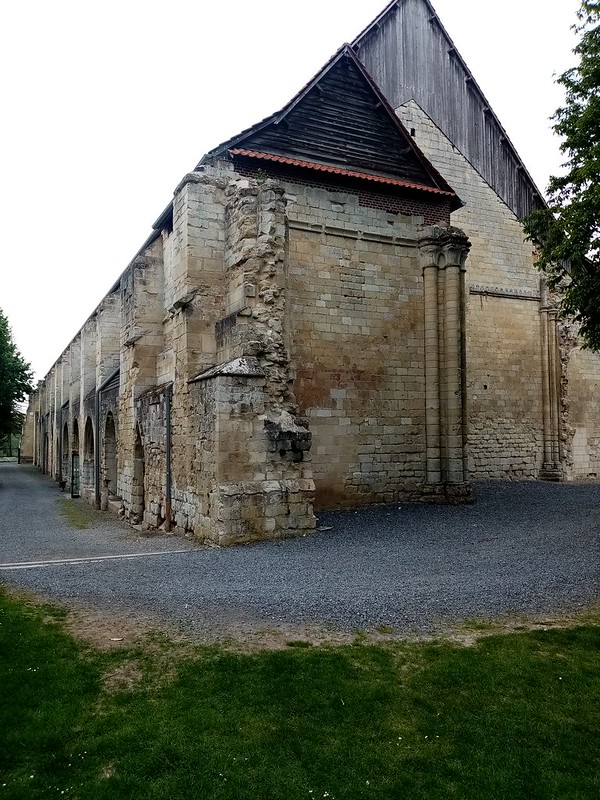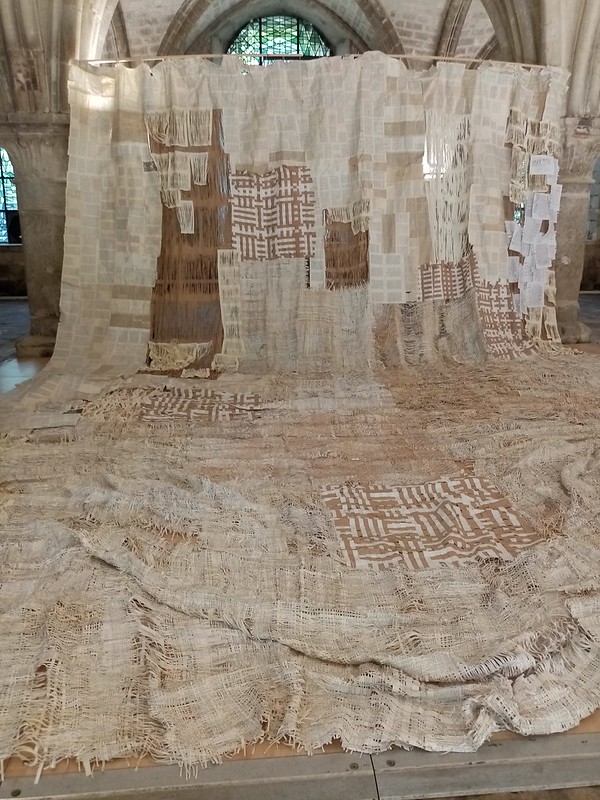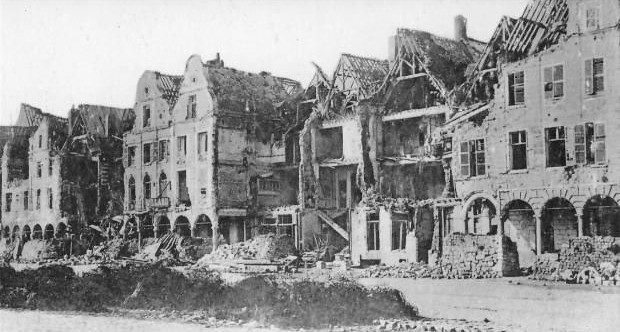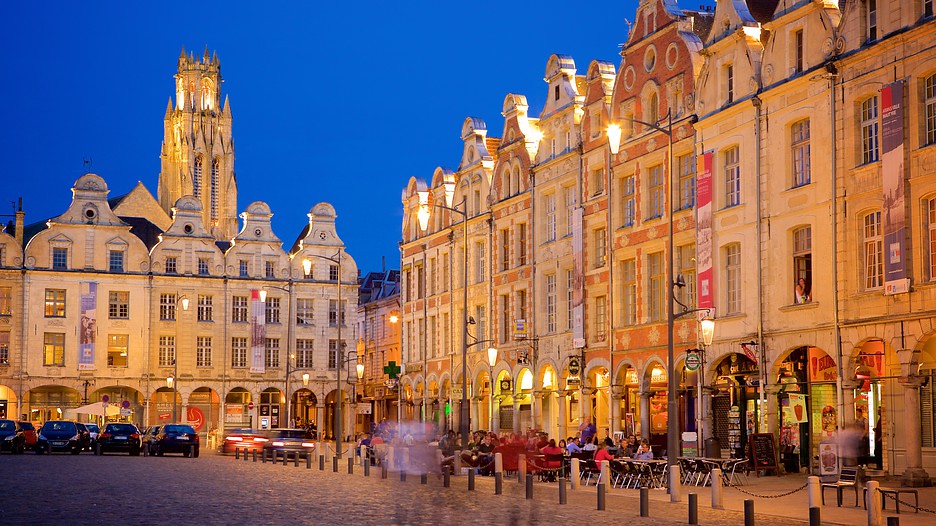Abbaye de Vaucelles, 12th century
May 7, 2022
The Abbaye de Vaucelles gives you the feeling of being a monk in medieval times, with its stone structures, vaulted ceilings and chilly cellars, the peaceful gardens (forget the work involved), which specifically includes herbs mentioned in the Bible. Perhaps it was those Biblical herbs that had me sneezing as soon as we came near the garden just past the statue of the monk.
The complex was founded in 1131 by Saint Bernard near Cambrai, in northern France. It was Bernard’s 13th monastery, and was to become the largest Cistern monastery. It retains some of its structures. Others were destroyed by the German Army in WWI to keep its food stores from the Allies. The Abbaye, then privately owned, sat on the Hindenburg Line. There was additional destruction during the French revolution, as a result of the Church’s support of the monarchy. It was used by local peasants after the French revolution. The Bishop’s palace was purchased by a woman who lived there with her daughter.
The Gothic church it once supported measured 137 meters in length x 64 meters at its widest. You can see its dimensions outlined where it stood. Some books from the library, which had 20,000 to 40,000 volumes in 1257, are kept in Cambrai. The Lagoutte family bought it in 1971. They restored what they could and opened it for visitors. It was bought in 2017 by the regional government in 2017.
When Bernard died in 1153, there were 103 monks and about 300 lay brothers who performed the tasks necessary for the running of the monastery and its substantial production. In the 13th century they built the large church, two cloisters and other buildings.
In 1254 King Louis donated a thorn from the Crown of Thorns. At the end of the 13th century , the abbey, placed under the protection of the popes and kings of France, built the aforementioned monumental church, two cloisters and numerous buildings. In the next century the monastery suffered during the Hundred Years War, a war of religion. It was attacked on several occasions, looted, sacked and rebuilt. It was plundered in 1482 and 1543. In 1555 the Truce of Vaucelles was signed here, leading to the end of war between France and Spain. For more information see their website https://abbayedevaucelles.fr/l-abbaye-et-son-histoire














